June 5, 2018
Even though the majority of Slovenian voters believe they understand at least vaguely how the election system works in their country, most of them were nevertheless surprised to learn that the Pensioner's Party (DeSUS) and List of Alenka Bratušek (SAB) passed the 4% threshold and hence entered Parliament, while their respective leaders, Karl Erjavec (the current Foreign Minister) and Alenka Bratušek (current MP) did not. Many wondered how this was even possible, which can only mean that not even the voters themselves know how the system of parliamentary elections in Slovenia actually works. And, as you might conclude by the end of this article, they could hardly be blamed for that.
In the lines that follow, we'll go through the voting system by explaining the path which let five candidates from SAB and same number from candidates of DeSUS into the Parliament, but shut the door in front of their respective leaders.
So, the first thing to know is that there are 90 seats in Parliament, two of which are delegated to the representatives of minorities (Italian and Hungarian) in a separate election system which shall not be addressed in this article. We will thus be talking about the selection procedures for the remaining 88 seats.
The second thing that’s easy to miss by a non-voter is that voters have to vote in the electoral districts of their permanent address, while parties remain flexible in their choice of a candidate for each specific district – a candidate does not have to live where they stand, or even have any connection to it. This gives the parties some space to manoeuvre with regard to the candidates they just want to use to collect votes, and those they would like to see in Parliament.
Furthermore, it is in each party’s interest to present a candidate for each one of the 88 electoral districts, or else voters in a district without that party representative would not be able to cast a vote for that party, as it wouldn’t be on their ballot.
But first things first, what are electoral districts?
- Electoral units and electoral districts
The entire country is divided into eight electoral units, and each elects 11 members of Parliament. These units are then further divided into 11 electoral districts.
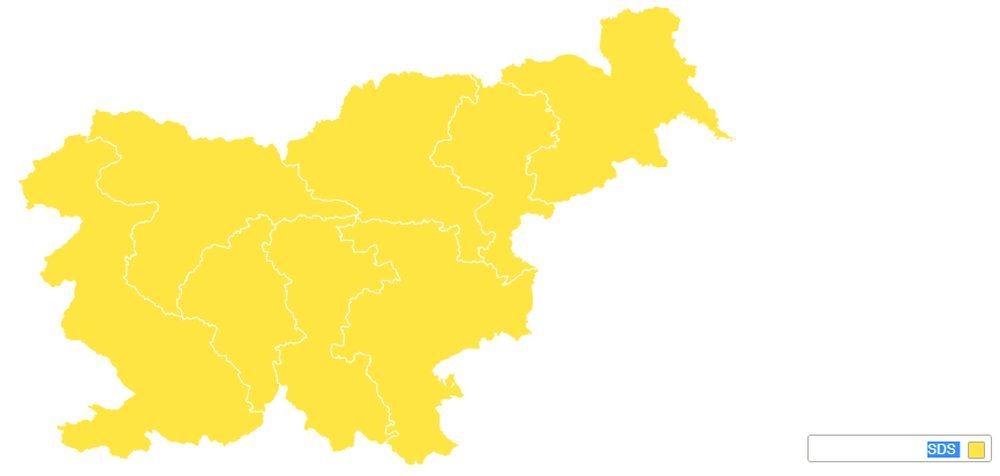
Winners by electoral units
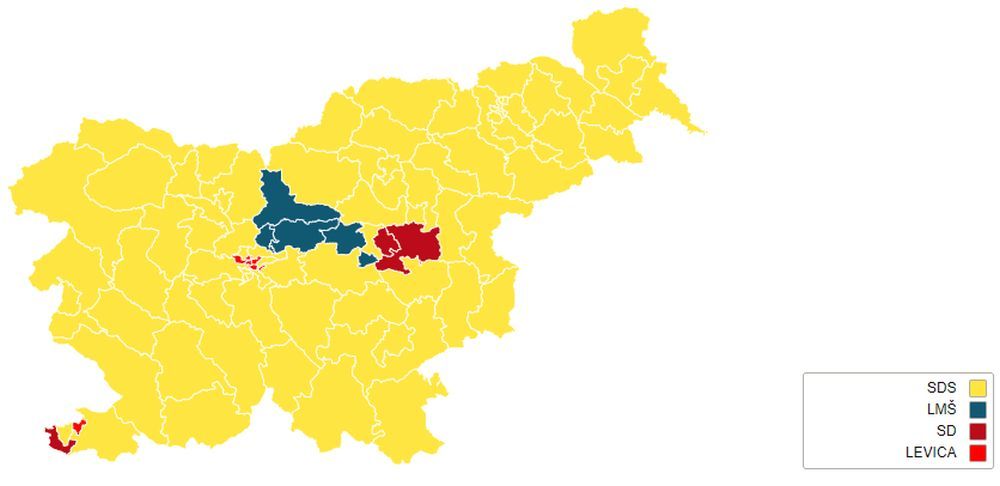
Winners by electoral districts
Maps by the State Election Commission
Political parties compose a list of candidates that will represent the party in each electoral unit.
There are thus a maximum of 11 candidates that one party can present in one electoral unit, and only one candidate can run in each district. If there are less than 11 candidates on an electoral unit's list, then one candidate can run in up to two electoral districts. However, as one candidate can only run in one electoral unit, these two electoral districts have to belong to the same electoral unit.
As confusing as this sounds it’s all quite important, as who eventually gets to sit in Parliament is decided at this very local level of elections.
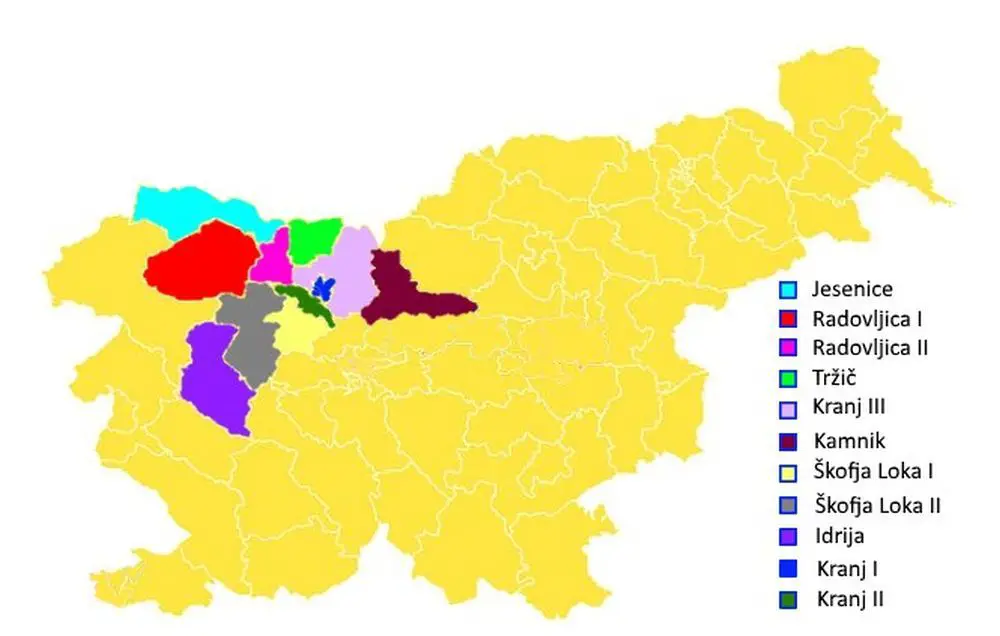
Map: The Kranj electoral unit with its 11 electoral districts
Alenka Bratušek and Karl Erjavec were both competing for their parliamentary seats in the electoral unit of Kranj. Bratušek in two districts, Kranj I and Kranj II, and Erjavec in electoral district Tržič.
- The 4% threshold
The first thing anyone wants to know after the ballots are counted is whether or not a particular party passed the 4% threshold of all valid votes at the national level. This is the first condition for any party to be able to qualify for Parliament.
The Party of Alenka Bratušek managed to gather 5.12% of all votes, while DeSUS of Karl Erjavec reached the threshold with 4.91% of all votes. So both parties passed and got at least four parliament seats.
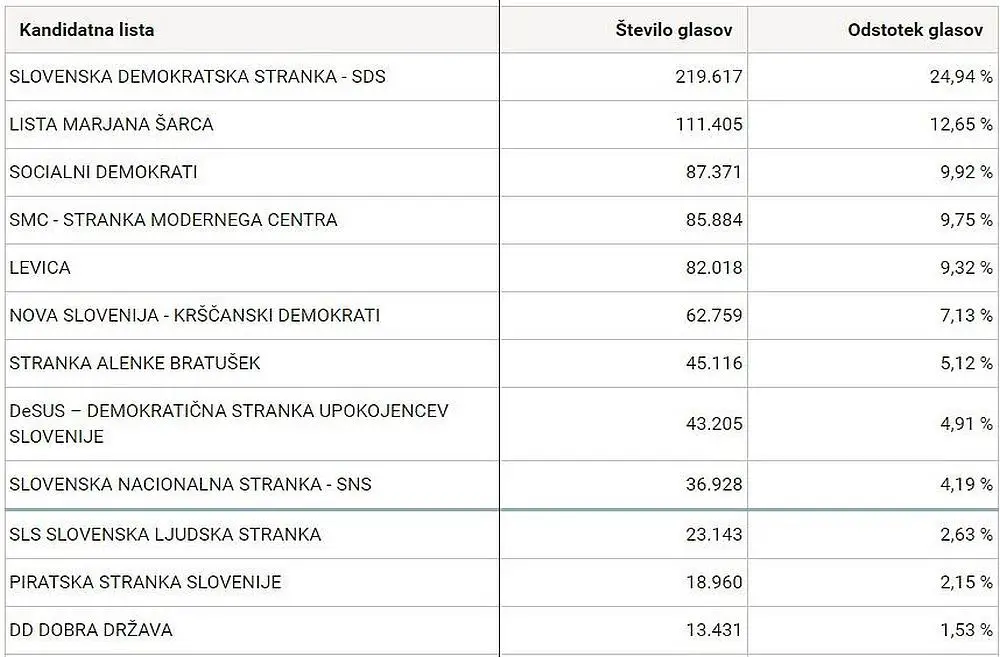
Data Source: State Election Commission
- Delegation of seats at the level of electoral unit
For the parties that reached the 4% threshold at the national level, seats are first delegated at the level of each electoral unit and according to the Droop quota (see Wikipedia), which is calculated as 1/12 of all valid ballots of the electoral unit in the following way.
If a particular party got more than 1/12 of all votes in a particular unit, the list of the party candidates in this unit automatically gets one Parliament seat; if the list gathered more than 2/12 of all votes, they get two seats, and so on.
Within each electoral unit, the lists of candidates are then lined up according to the share of votes they got in their respective electoral districts. This means that what matters is the percentage of votes a candidate gathered in their district and not the absolute number of votes they got. If a party managed to get a seat (or more seats) through the Droop quota, this seat will go to the candidate with the highest share of votes if compared district by district.
However, as evident from the table below, neither the Party of Alenka Bratušek (SAB) nor Pensioner's Party (DeSUS) reached the Droop quota in the electoral unit of Kranj. In fact, neither of the parties reached the Droop quota in any of the eight electoral units.
| Electoral unit | all votes | Droop quota | SAB | DeSUS |
| 1. Kranj | 113 895 | 9 491 | 7 659 | 4 058 |
| 2. Postojna | 101 473 | 8 456 | 6 552 | 5 627 |
| 3. Ljubljana-Centre | 122 103 | 10 175 | 7 276 | 5 106 |
| 4. Ljubljana-Bežigrad | 121 716 | 10 143 | 6 317 | 5 562 |
| 5. Celje | 113 988 | 9 499 | 5 039 | 6 325 |
| 6. Novo mesto | 100 279 | 8 357 | 4 246 | 5 243 |
| 7. Maribor | 103 672 | 8 639 | 4 416 | 5 520 |
| 8. Ptuj | 103 346 | 8 612 | 3 611 | 5 764 |
However, both parties reached the 4% threshold which gives them a minimum of four parliamentary seats. Before we address the problem of the surplus votes of the Droop quota, let's take a look at the mechanism that divides the seats among parties at the national level.
- D’Hondt method of seat allocation at the national level
Once the number of votes each party got at the national level is clear, all parties below the 4% threshold are taken out of any further calculations. For everyone else the D’Hondt method (Wikipedia) is applied in the following fashion.
For each party, the number of all votes it received is first divided by one, then by two, then by three and so on, until it is divided by 88. From all the numbers we get this way (88 numbers per party), the 88 highest ones are selected, and these then give us the number of seats each party gets in the Parliament. (If this is still unclear, and there’s no reason why it shouldn’t be, check out this example.)
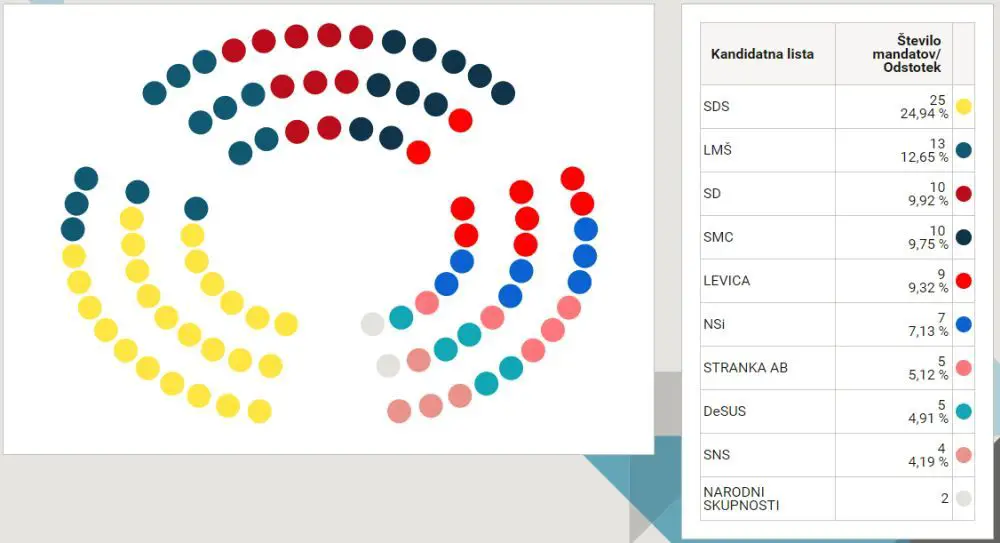
- Who takes the seats
The difference in seats allocated with the Droop quota and the seats each party is awarded by the D’Hondt method (all of the SAB and DeSUS seats in this case, as they failed to fill any through the Droop quota) is then allocated to the electoral units with the highest remaining share of votes relative to the particular unit’s Droop quota (see National Assebly Election Act, Article 93).
To simplify what has just been stated, in the case of DeSUS and SAB the five seats each party has won at the national level are to be distributed among the electoral units with the highest relative percentage of votes.
| Electoral unit | SAB % | DeSUS% |
| 1. Kranj | 6.72% | 3.56% |
| 2. Postojna | 6.46% | 5.55% |
| 3. Ljubljana-Centre | 5.96% | 4.18% |
| 4. Ljubljana-Bežigrad | 5.19% | 4.57% |
| 5. Celje | 4.42% | 5.55% |
| 6. Novo mesto | 4.23% | 5.23% |
| 7. Maribor | 4.26% | 5.32% |
| 8. Ptuj | 3.49% | 5.58% |
As evident from this table, the DeSUS’ list of the electoral unit Kranj got no seats, leaving Karl Erjavec empty handed. The SAB list of Kranj electoral unit, however, did, it just wasn’t Alenka Bratušek who won it.
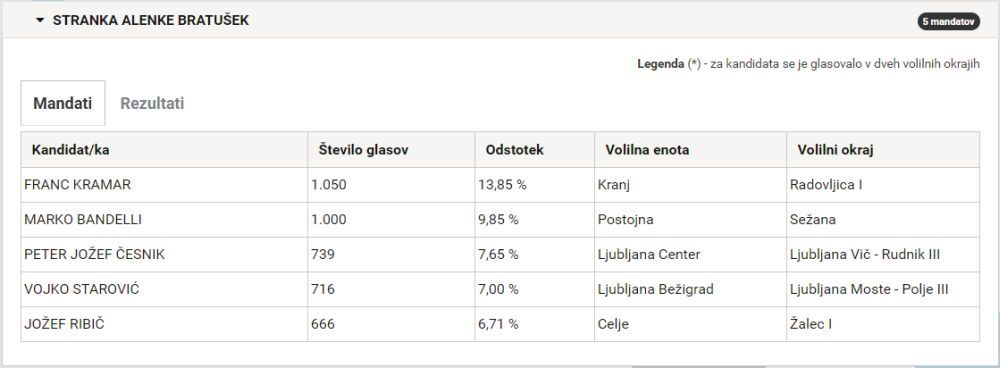
Source: State Election Commission
As already stated, within each electoral unit candidate lists are lined up according to their respective share of votes they got in each of their districts. Alenka Bratušek was running in two districts, Kranj I and Kranj II, and won 10.56% and 11.73% of votes in those districts, respectively.
However, her party colleague Franc Kramar, who was running in the district of Radovljica I, managed to gather 13.85% of the votes in that particular district, which puts him at the top of the list and the Parliament seat therefore goes to him, leaving Alenka Bratušek empty handed.
To sum up, Karl Erjavec got it all wrong when decided to run for his seat in the Kranj electoral unit, as it turned out the support for his Pensioner’s Party was lowest there.
Alenka Bratušek, on the other hand, choose the right unit to run in, as the overall support for her party in the Kranj electoral unit was the highest in the country. However, she miscalculated the relative support her party might have at the district level, which sent to Parliament a party colleague instead of herself.
Whether the two, Bratušek and Erjavec, will be seen around the political arena in the near future now depends largely on whether their parties enter the ruling coalition which would allow them to take, say, ministerial positions. This coalition, however would have to be left-leaning, which means that Janez Janša of the winning SDS has to fail in forming a right-leaning coalition first, something that will play out in the days or weeks ahead.






